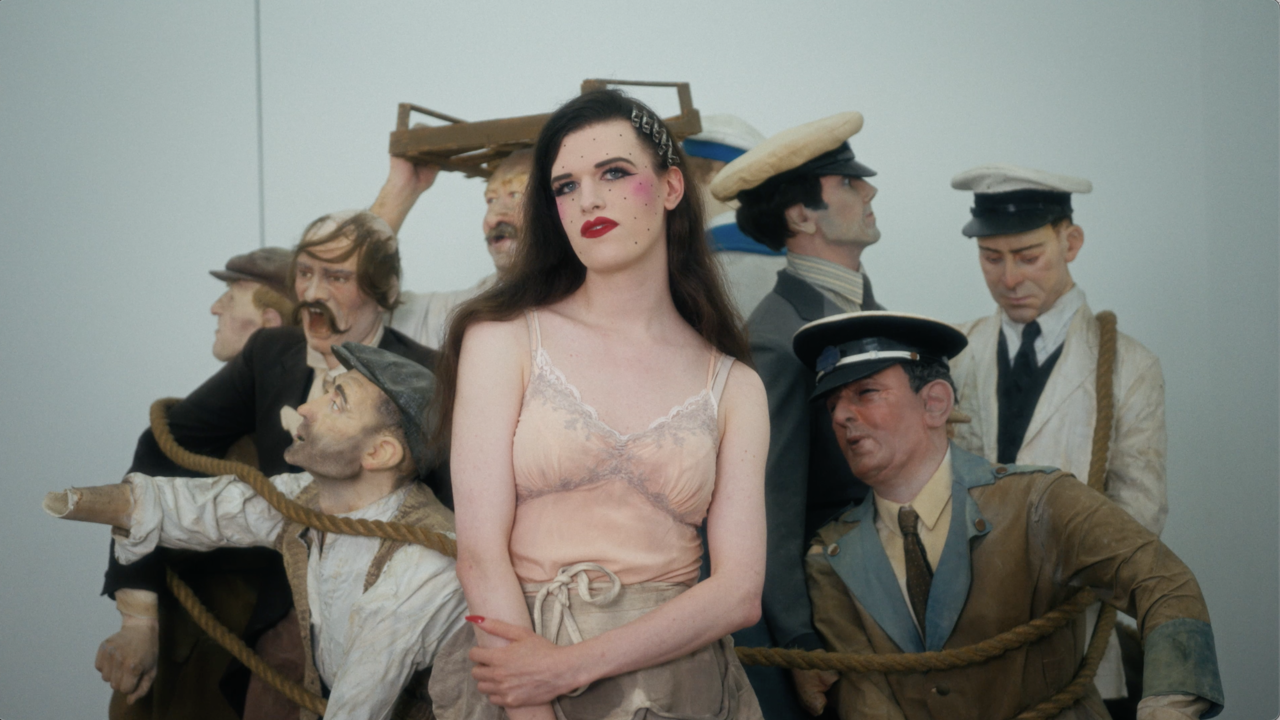Sheela Gowda
Blood, thread and cow dung; gender politics, myth and mysticism
Blood, thread and cow dung; gender politics, myth and mysticism

If ‘Indian Highway’, the Serpentine Gallery’s recent major group show of contemporary Indian art, endeavoured to explore the complexities of life in the subcontinent, it was on the right track when it included Bangalore-based Sheela Gowda’s installation Darkroom (2006). Here battered tar drums, gleaned from road builders in her home town, were arranged into a two-metre ‘house’, complete with pillars and small doorways. The rusty metal structure resembles the tin shacks of slum dwellers, which are familiar sights in Indian cities. Scrambling into Darkroom’s cramped quarters, though, makes for an unexpectedly ethereal experience. Tiny holes in the ceiling allow light to filter through, conjuring up a star-spangled sky. By generating this double-edged adventure, Darkroom illustrates the dramatic gap between dreams and reality in India. If its depressing exterior alludes to deprivation, the act of stargazing gestures to the high hopes of success in the city that lures its citizens into ramshackle dwellings.
Gowda, who is representing India at this year’s Venice Biennale, often employs ordinary materials to create semi-mystical effects: she has also used, for example, cow dung (prized in rural India as anything from fertilizer to medicine), kumkum (red turmeric), thread and incense (both connected with Hindu religious rituals). Draupadi’s Vow (1997) is a rich cascade of ‘hair’ (actually black thread) suspended on a wall. The roots and tips of this unruly mane are stained with kumkum, taking on the colour of coagulated blood. In India hair is a sign of fertility, and a thick plait with a centre parting filled with kumkum is a symbol of marital fulfilment. Thus Gowda’s wild locks deliberately destabilize concepts of demure domesticity, recalling Princess Draupadi from the Hindu epic myth the Mahabharata, who was famed for her feisty ways. Simultaneously married to five Pandava brothers, Draupadi was humiliated when the eldest brother was tricked into losing her at a game of dice, so the heroine pledged never again to tie her hair until she could rinse it in her enemy’s blood.
Draupadi’s Vow’s turmeric-tinged tresses can be understood in relation to what could be termed contemporary feminist art in India: for example, Delhi-based Anita Dube’s sculptural suggestions of craft, the body and eroticism in Silence: Blood Wedding (1997), where real bones are sensuously draped in orange velvet, beads, sequins and lace to hint at feminine coquetry and disfigurement. Like Dube, Gowda represents the body as a site of violence. And Tell Him of My Pain (1998–2001) consists of seemingly endless loops of crimson cords strewn across walls and floors, their ends tapering off into gleaming clumps of silver needles. Gowda made this work by pulling 360 feet of red thread through the eye of each delicate needle. But if such obsessive zeal evokes the pleasures of ‘women’s work’, Gowda’s spools look too much like arteries leaking blood to leave such stereotypes safe for long.

In the 1990s Gowda moved from making paintings to fashioning more conceptual sculptural offerings. Her fascination with kumkum, string and cow dung dates from this period. Although drawings and paintings continue to form part of her repertoire, they tend to be components of a wider aesthetic, as in the installation Private Gallery (1999), where two laminated wooden panels construct a personalised viewing room. The walls of this ‘white cube’ are decorated with delicate watercolours of Bangalore and thumb-sized pats of cow dung – referencing the collision of the rural with the urban in India. Some critics have argued that the shift in the artist’s practice is traceable to the Hindu–Muslim riots that erupted in Mumbai in 1992: although Gowda refuses to be pigeonholed, it is clear that in the aftermath of the carnage she started to draw more heavily on her socio-political context. The implicit aggression of And Tell Him of My Pain may well refer to the subcontinent’s blood-spattered history – also reminding us that Bangalore’s urbanization has trampled local craft traditions.
Similarly Gowda’s latest solo show, ‘Crime Fiction’, consisting of inkjet prints, sculptures and installations, at GALLERYSKE in Bangalore in 2008, addressed a plethora of social concerns, investigating connections between artifice, disguise and deceit. As part of the diptych Crime Fiction (2008), a grey moth hovers on a black background. Looking closely at the patterns on its gossamer wings, we see traces of its predators. From one angle we glimpse a snake; from another the watchful eyes of an owl blink balefully at us, as though Gowda is stressing the difficulty of distinguishing prey from predator in human relationships.
Gowda is best known for sculptures that tread a fine line between disgust and delight. ‘Crime Fiction’, however, dominated as it was by monochromatic prints on paper, wasn’t as affecting as her work usually is, although Food Hunters (2008), composed of tiny ant-shaped glass beads strung on 250 feet of copper wire that nestled in the corners of the gallery, exhibited some of her customary visceral trickery: representing the cycle of life, ants run back and forth between victims and their vanquishers.






















